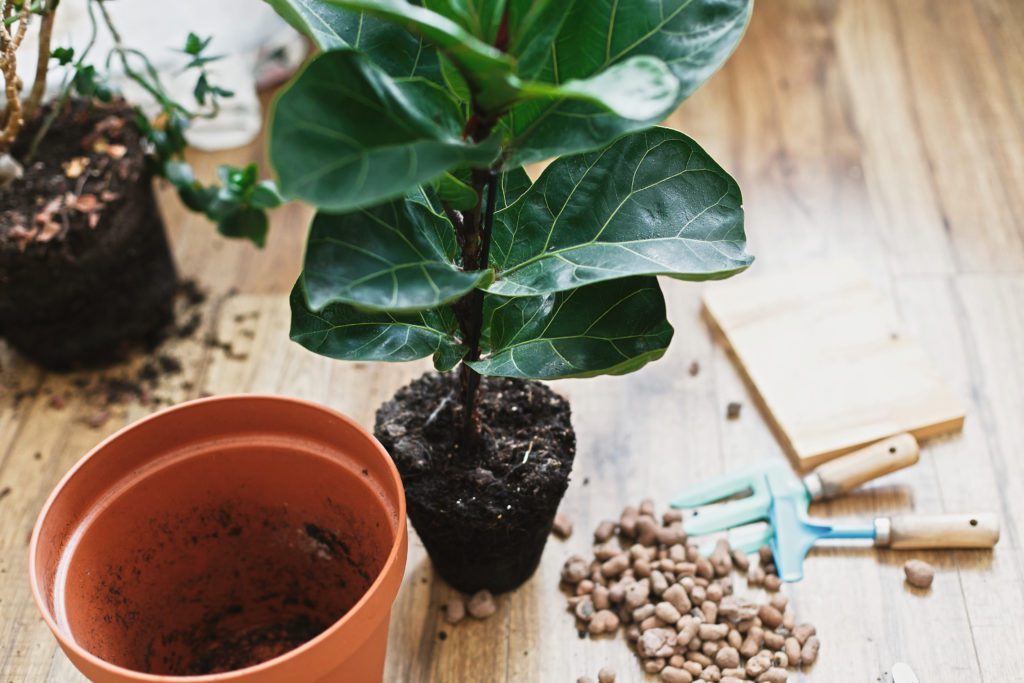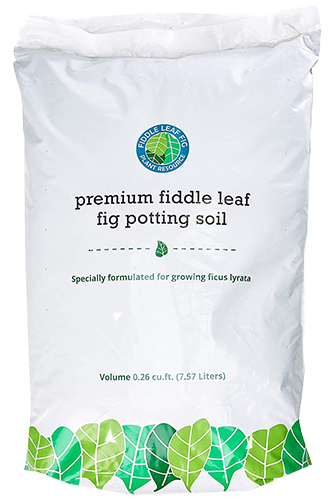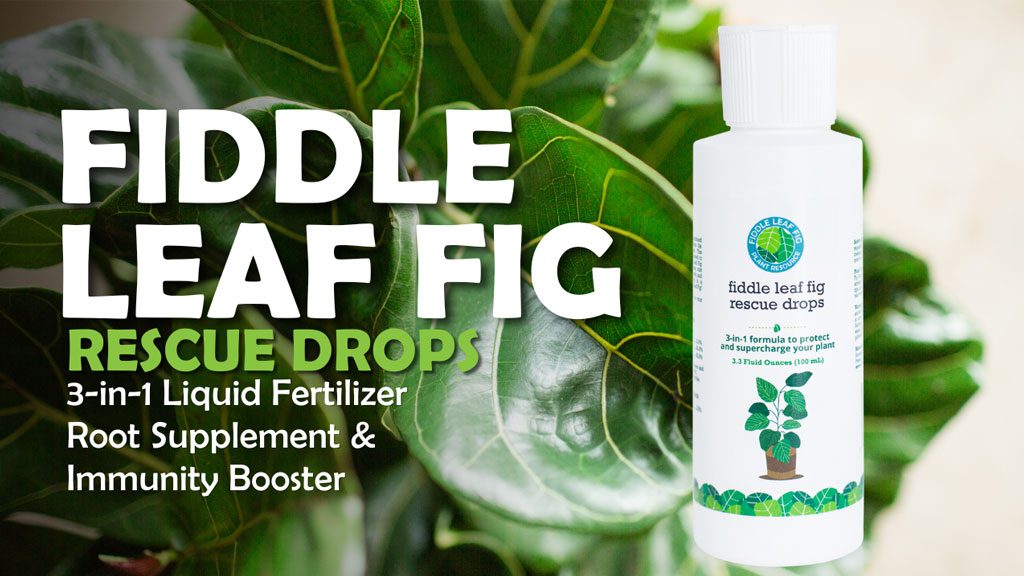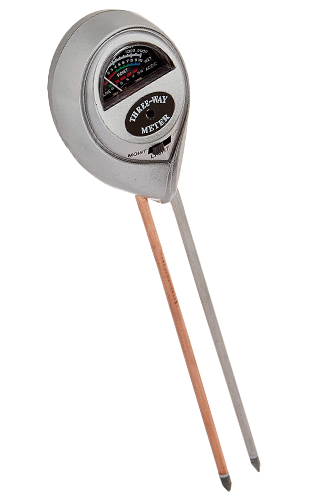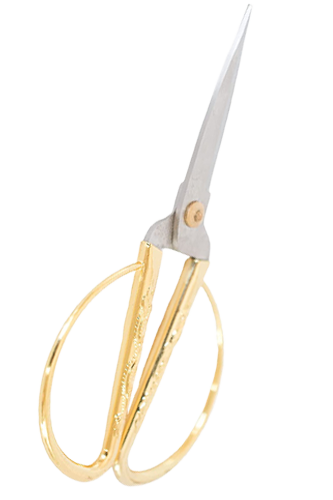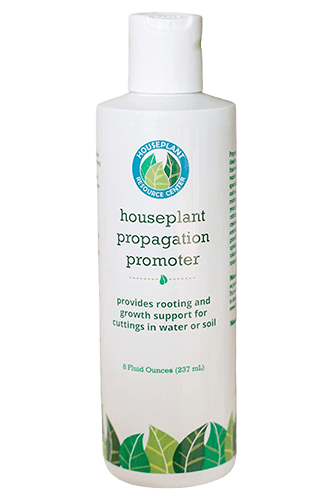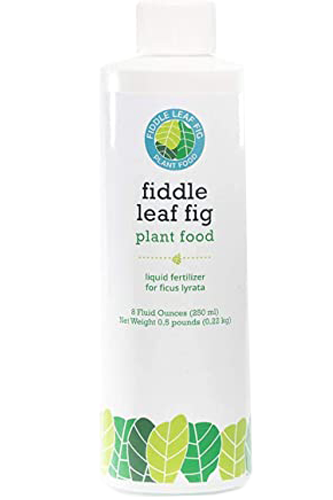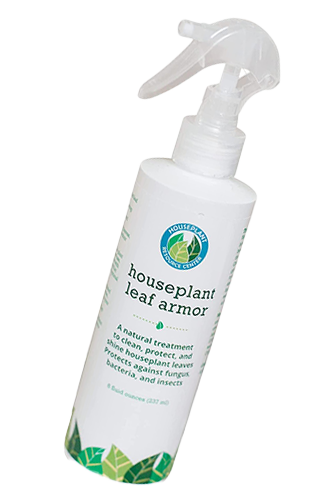If your fiddle leaf fig has been in the same pot for more than a year or two, it might be root-bound! This can also happen with a fiddle you just bought from a store or from someone you know. And when a fiddle is root-bound, it can cause health problems for the plant. Here’s how to diagnose this issue and fix a root-bound fiddle leaf fig.
Why fiddles don’t like to be root-bound
While fiddles like to be fairly snug in their pots, they can run into issues when you have a root-bound fiddle leaf fig. When the roots are wrapped up too tightly, they have a harder time absorbing water and nutrients because the soil can become very compacted and the roots don’t have room to stretch out.
This can lead to both over AND underwatering because the root ball will have trouble absorbing water effectively, and then it will struggle to drain and hold onto water for far too long. You may also notice signs of nutrient deficiency and overfertilization simultaneously because some roots will get too much fertilizer while roots deeper in the pot don’t get enough.
Cramped roots can also stunt your fiddle’s growth!
Make sure to repot your fiddle leaf fig every 1-2 years to prevent these issues and keep your fiddle happy and growing!
Is your fiddle leaf fig root-bound?
How can you tell if you have a root-bound fiddle leaf fig? Here are a few different signs.
Sign #1: Roots growing in a circle
In many cases, you can tell just by looking! Look into your fiddle’s pot: if you see roots growing around the inside of the pot, it’s definitely root-bound.
Sign #2: Compacted soil
If the soil is very compacted, or hard and pulling away from the edge of the pot, that’s also a sign that your fiddle’s roots could be bound up in the pot. This can also be a sign of extreme dryness, which is an issue that often occurs in conjunction with wrapped roots.
Sign #3: Roots growing out of the drainage holes
If you see roots popping out of the top or bottom of the pot, that means the roots are squished and looking for somewhere to go! If you see this, you definitely have a root-bound fiddle leaf fig
Sign #4: Stunted growth
As I mentioned earlier, a bound-up root ball can halt your fiddle’s growth! If nothing about your care routine has changed in a while and your fiddle suddenly stops growing, it might be time for a new pot.
How to Fix a Root-Bound Fiddle Leaf Fig
The only way to treat a root-bound fiddle is to repot. Fiddles need to be repotted every 1-2 years to give the roots room to grow, so make sure this is part of your routine!
Step 1: Pick your pot.
To repot your fiddle, select a pot that’s about 2-3 inches larger than the pot it’s in. Make sure this pot has drainage and that it’s clean so you don’t risk passing old pathogens or fungus to your fiddle.
Step 2: Unpot your fiddle and loosen the roots.
Then tip your fiddle’s pot on its side and gently ease the plant out. NEVER pull the plant upward to uproot it!
If your fiddle is very root-bound, the root ball is likely compacted and hard. If that’s the case with your fiddle, massage the root ball to loosen it. Run it under water if necessary to dislodge some of the soil (just make sure it isn’t ice-cold water; tepid is best!).
Step 3: Repot the fiddle.
Once the root ball has relaxed, add a few inches of Fiddle Leaf Fig Soil or cactus mix to the bottom of the new pot. Place your fiddle in the center of the pot and add more soil around the edges until the plant can stand upright. Don’t forget to leave a few inches of headroom for watering.
Step 4: Aftercare
Once you’ve potted the plant, water thoroughly and add a little more soil to accommodate any settling.
Place your fiddle back in its place and resume your usual care routine so it can adjust to its new pot. But hold off on fertilizing for a month or so, because the roots will be tender after such a major change and you don’t want to overwhelm the plant! After a month, go ahead and resume fertilizing with Fiddle Leaf Fig Food to provide your fiddle with the nutrients it needs to continue growing and stay healthy!
That’s it! Bound roots can harm your fiddle if left untreated for too long, but it’s a pretty easy problem to solve. But make sure that repotting every year or two is part of your care routine to prevent root wrap from happening in the first place!

